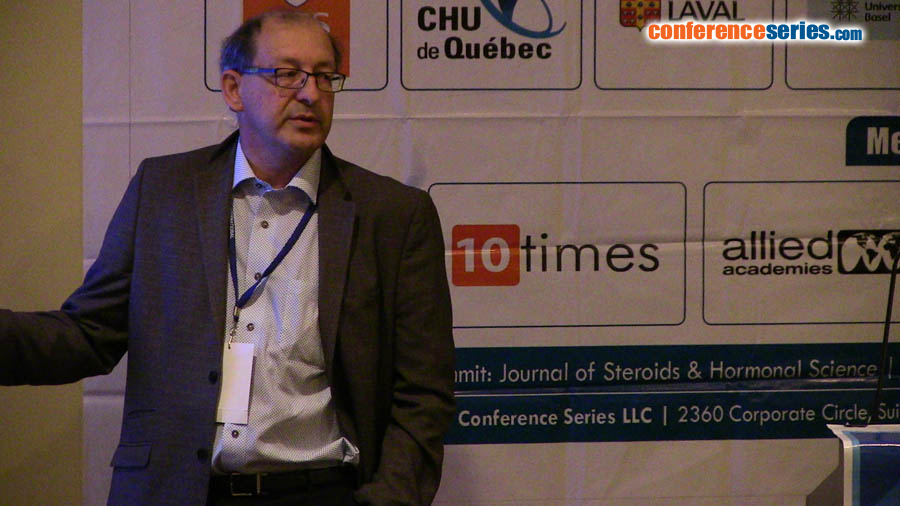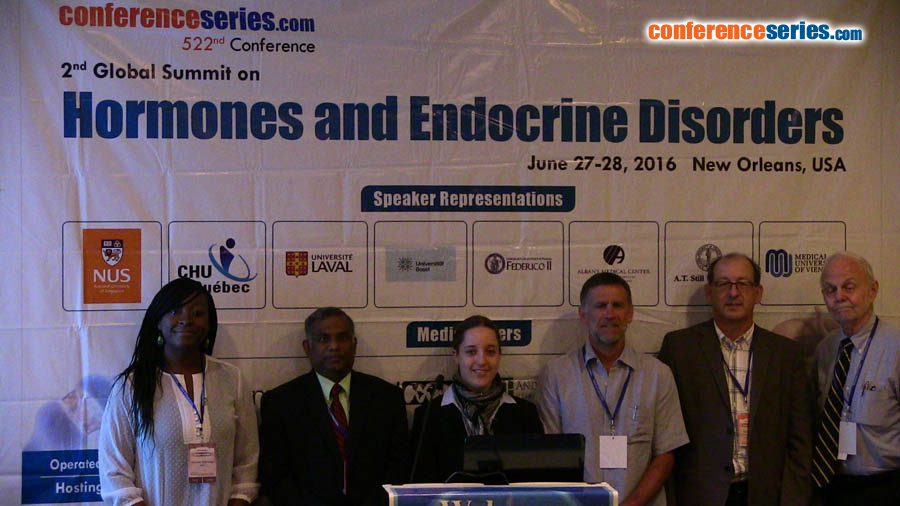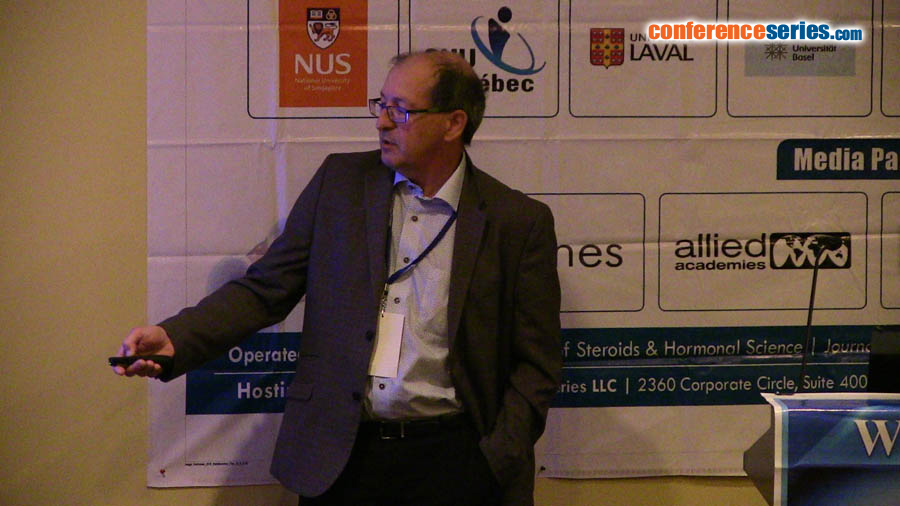
Donald Poirier
CHU de Quebec-Research center and University Laval, Canada
Title: A new family of aminosteroid derivatives to treat refractory cancers
Biography
Biography: Donald Poirier
Abstract
The development of cytotoxic agents that selectively promote the apoptosis of cancer cell while limiting the death of normal cells would represent a significant breakthrough in cancer therapy. The aminosteroid derivative RM-133 was recently developed in our research group as anticancer agents. RM-133, or {4-[(2β,3α,5α,17α)-3,17-dihydroxypregn-20-yn-2-yl]piperazin-1-yl}[(2S)-1-(quinolin-2-ylcarbonyl)pyrrolidin-2-yl]methanone, was synthesized from androsterone using a sequence of six steps in an overall yield of 14%. It is a promising selective pro-apoptotic agent showing antiproliferative activity (IC50 ranging from 0.1 to 4.5 µM) on various human cancer cell lines (HL-60, PANC-1, LNCaP, LAPC-4, MCF-7, T-47D and OVCAR-3). For in vivo assessment on animal models (xenografts), nude mice were inoculated in both flanks with human cancer cells (HL-60, MCF-7, PANC-1 or OVCAR-3) and tumors obtained after two-three weeks were treated or not with RM-133 using a mixture of ethanol (EtOH) and propylene glycol (PG) or dimethyl sulfoxide (DMSO) and 0.4% aqueous methylcellulose (MC) as vehicle for subcutaneous (sc) injection. The tumor size was measured twice weekly and the result expressed as percentage of the initial tumor. In a first series of experiments, RM-133 reduced the tumor growth of all four tested xenografts: HL-60 cells (leukemia) by 58% (60 mg/kg/day, sc, EtOH:PG/8:92), MCF-7 cells (breast cancer) by 60-84% (60 mg/kg/day, sc, EtOH:PG/8:92), PANC-1 cells (pancreas cancer) by 63% (240 mg/kg/2 days, sc, EtOH:MC/8:92), OVCAR-3 cells (ovary cancer) by 50% (60 mg/kg/day, sc, EtOH:MC/8:92). When tested at higher dose on the OVCAR-3 xenograft tumor model, RM-133 (2 x 240 mg/kg/2 days, sc, EtOH:MC/8:92) fully blocked (100%) the tumor growth. RM-133 was also well tolerated by mice and no weight loss was recorded. These interesting results, especially those obtained for two refractory cancers (pancreas and ovary), encourage us to pursue the optimization and mechanistic studies. In summary, steroid derivatives were synthesized and generated promising in vivo results against a series of cancer tumor models.





